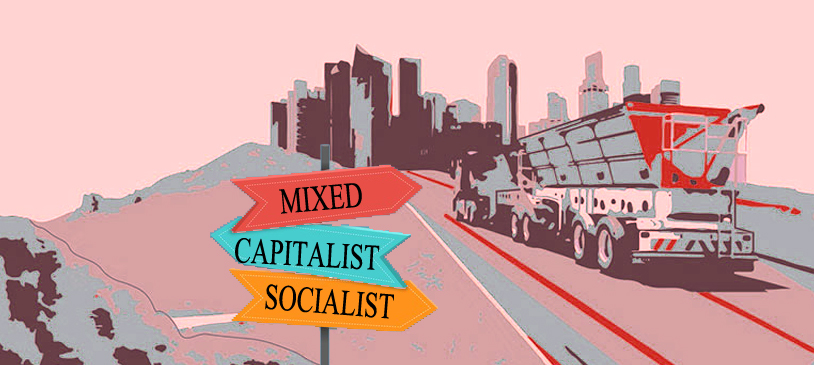Indian Economy: First of all, let’s understand what Economics is
Economics is the branch of science in which people study how most of the countries, civilization utilize its renewable and non-renewable resources. Also, it explains co-relations among distribution, production and consumption of goods and services.
There are three forms of economics
1. Socialist
2. Capitalist
3. Mixed Economy
1. Capitalist/ Capitalism:
It is the oldest and popular one in today’s time. Its main characteristic feature is every time we talk about capitalism everything is privately owned. There is no intervention of government capitalist system, which means the government will don’t interfere in prices of commodities. Also how much commodities are produced or what kind of commodities can be consumed. These critical decisions for the economy are privately taken by producers and consumers themselves.
The drawback is the firm owner main task is to maximize their profits and in capitalism, they may start exploiting workers by providing low wages or may increase their working hours.
2. Socialist/Socialism:
Socialism is an economic system that advocates complete or absolute ownership on means and production of goods and services by state. It is the centrally owned society in which all the major decisions are taken by the central government.
The drawback is since all power lies at the centre there are high chances of corruption. And as it an economy taking care of every single person it is very unlikely that this type of economy will be able to compete with the world.
3. Mixed Economy/ Mixed Economies:
The mixed economy is defined as a mixture of capitalism and socialism. It is a kind of economy where public and private sector co-exist. Most of the economies in today’s world follow this kind of economic structure. Mostly countries, where democracy prevails like India mixed economic system, is possible. Indian Economy works on the same principle where public and private sector co-exists.
The drawback is sometimes government controls too much which affects businesses and sometimes causes damage to the economic growth of the country because of welfare schemes.
